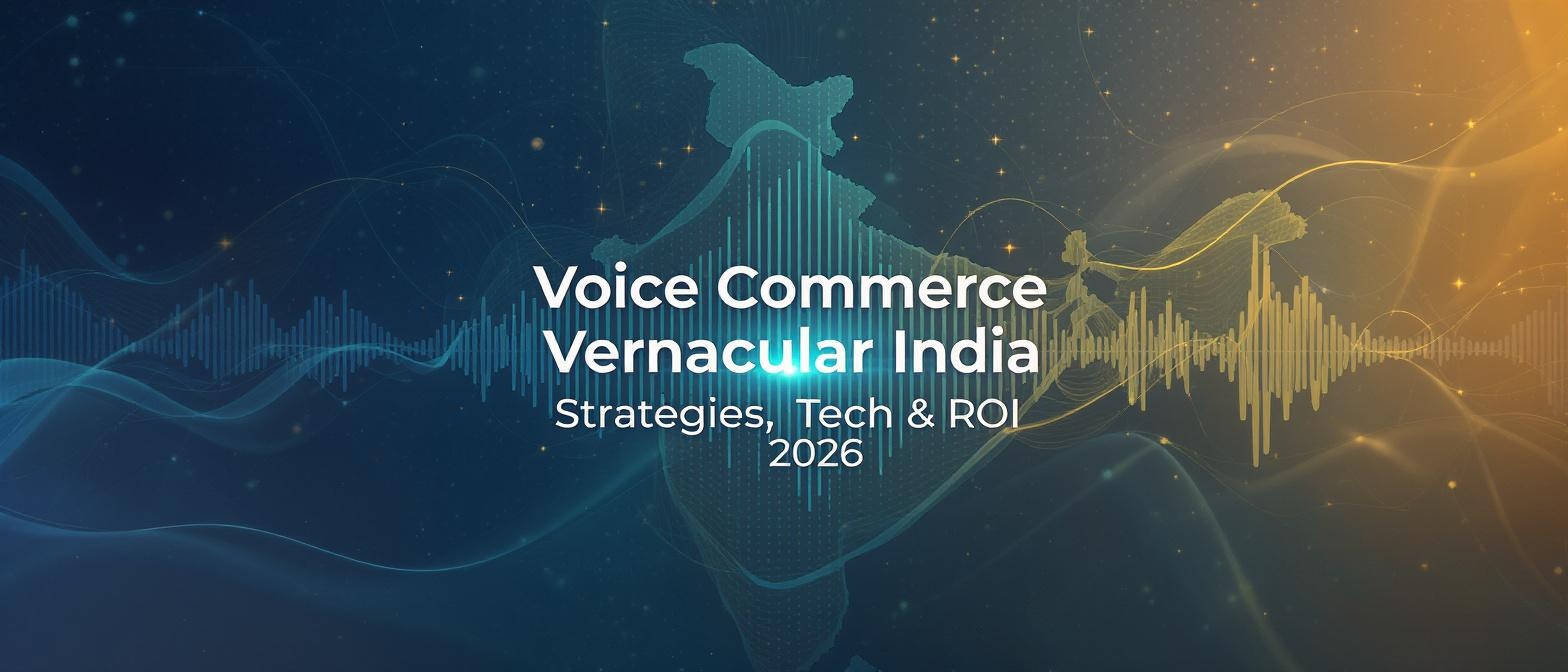AI Voice Cloning Indian Accents: Scale Multilingual Content with Authenticity
Estimated reading time: 14 minutes
Key Takeaways
- AI voice cloning is driving accessible, culturally accurate content for India’s diverse linguistic demographics
- Platforms like ElevenLabs, Jellypod, and Studio by TrueFan AI integrate deep learning for high-fidelity accent replication
- Key ethical pillars include consent, intellectual property rights, and cultural authenticity
- Micro-regional dialect support and real-time accent adaptation are on the horizon
- Responsible use and robust security measures ensure trust in this emerging technology
AI voice cloning Indian accents is no longer a futuristic concept; it's a transformative technology enabling YouTubers, podcasters, and regional creators to generate authentic, culturally resonant voiceovers at scale. In a digital landscape where personalization dictates engagement, this technology offers an unprecedented advantage. At its core, AI voice cloning uses deep learning models to replicate a speaker’s vocal characteristics, accent, emotion, and inflection to produce synthetic speech indistinguishable from real voices. This capability is arriving at a critical moment for India's creator economy.
India's content boom is fueled by over 600 million vernacular internet users, a demographic hungry for content in their native tongues. This explosive growth has created a pressing need for scalable, high-quality localization. Content creators are actively searching for solutions like “YouTube voice cloning for creators” and “AI dubbing Indian languages” to bridge linguistic divides and expand their reach without the prohibitive costs and logistical nightmares of traditional recording. This guide explores the 2025 landscape of voice cloning in India, its technical underpinnings, powerful use cases, and the ethical framework required to deploy it responsibly.
Source: https://speechify.com/voice-cloning/indian/
Source: https://vaani.futurixai.com/blogs/top-6-voice-cloning-tools-youtubers-influencers-india-2025
The 2025 Landscape: Voice Cloning Tools in India
The market for AI voice solutions is experiencing exponential growth, with the global Voice Cloning Market projected to reach USD 2.40 billion in 2025 and continue its rapid ascent. This surge is particularly pronounced in India, where the demand for multilingual content is insatiable. By 2025, the Indian AI voice cloning ecosystem is a competitive and innovative space, dominated by key players who offer nuanced solutions for creating an authentic Indian accent AI.
Leading the charge are platforms like Vaanika, ElevenLabs, and Jellypod, each providing powerful tools for creators. They specialize in generating realistic text-to-speech outputs that capture the unique cadence and intonation of various Indian dialects. These services are becoming indispensable for anyone needing high-quality voice over Indian English or regional languages. However, the most advanced solutions are pushing beyond simple text-to-speech, integrating voice cloning with comprehensive video generation and enterprise-grade security.
Platforms like TrueFan AI enable a more holistic approach with their self-serve SaaS platform, Studio. This browser-based tool is designed for marketers and creators who need both speed and sophistication. Studio by TrueFan AI distinguishes itself with a suite of powerful features:
- Avatar Library: Users can select from a library of photorealistic “digital twins” of real actors or create custom spokesperson avatars, providing a visual identity to accompany the cloned voice.
- Script-to-Video Generation: The platform allows one-click generation of lip-synced videos in over 175 languages, including a vast array of Indian dialects, directly from a script.
- In-Browser Editor: A user-friendly editor enables creators to trim videos, add subtitles, change aspect ratios, and rapidly produce variants for different platforms and languages.
- Enterprise-Grade Safety & Moderation: Crucially, the platform is built on a foundation of security and compliance. With real-time profanity filters, a consent-first model for voice usage, and ISO 27001 & SOC 2 certifications, it offers a secure environment for brands.
As we look at the voice cloning tools India 2025 market, the trend is clear: a shift from standalone voice synthesis to integrated, secure, and highly scalable content creation platforms is underway.
Source: https://www.mordorintelligence.com/industry-reports/voice-cloning-market
Source: https://vaani.futurixai.com/blogs/top-6-voice-cloning-tools-youtubers-influencers-india-2025
Source: https://jellypod.ai/blog/ai-tools-indian-voices
Unlocking Regional Tongues: Capabilities of Indian Language Voice Generators
An Indian language voice generator is more than just a text-to-speech engine; it is a sophisticated AI system trained on vast corpora of native speech. These systems are designed to reproduce the subtle accent, intonation, and contextual nuance of languages like Hindi, Tamil, Telugu, and Marathi with stunning accuracy. The goal is not just to pronounce words correctly but to speak them with the authentic rhythm and emotion of a native speaker.
This capability is a game-changer for creators. As noted by industry experts at Jellypod, brands can now “develop unique AI hosts with Indian accents or clone your voice to maintain brand authenticity” across all their content. This ensures a consistent and relatable persona, whether producing a podcast in Hindi or an advertisement in Tamil. The technology’s strength lies in its deep technical capabilities, which include:
- Advanced Accent Modeling: Modern platforms use fine-tuned Text-to-Speech (TTS) pipelines. These models are trained specifically on Indian linguistic data, allowing them to master the unique phonetic characteristics of different regions.
- Emotion Tagging & Style Transfer: Leading services like ElevenLabs offer customizable emotion, style, and multi-dialect support. This allows a creator to specify not just what is said, but how it's said—be it excited, professional, or conversational.
- Low-Latency Cloud Inference: For applications like real-time dubbing of live streams or interactive voice response (IVR) systems, the ability to generate speech with minimal delay is crucial. Cloud-based inference models make this possible, delivering high-quality audio in milliseconds.
The power of TrueFan AI's 175+ language support and Personalised Celebrity Videos further exemplifies this trend, offering unparalleled linguistic reach. For creators targeting India’s diverse population, this means Hindi voice cloning AI, Tamil Telugu voice AI, and regional language voice cloning are no longer separate, complex tasks. Instead, they are integrated features within a single, powerful multilingual voice cloning India platform.
Source: https://jellypod.ai/blog/ai-tools-indian-voices
Source: https://elevenlabs.io/text-to-speech/indian-accent
Practical Applications: Use Cases for Indian Content Creators
The theoretical power of AI voice cloning becomes tangible when applied to the real-world challenges faced by content creators. From individual YouTubers to large-scale brand campaigns, the technology is unlocking new levels of efficiency, engagement, and market penetration.
YouTubers & Influencers
For video creators, YouTube voice cloning for creators is the ultimate scalability tool. A tech reviewer, for instance, can record a gadget review in English and then use AI to generate flawless dubs in Hindi, Tamil, and Telugu. This process repurposes a single piece of content for multiple linguistic audiences, drastically expanding its reach without the need for hiring voice actors or re-recording. Furthermore, creators can use AI to generate localized intros and outros, greeting their audience in their native language to forge a stronger, more personal connection and boost engagement metrics.
Podcasters & Audiobook Producers
In the audio domain, AI voice cloning ensures unparalleled consistency. For podcasters producing serial shows, an AI-cloned voice maintains the exact same tone, pace, and energy across dozens of episodes, something even human voice actors can struggle with. For e-learning and audiobook production, AI dubbing Indian languages allows for the rapid and cost-effective conversion of educational modules and entire books into multiple regional languages, making knowledge more accessible across the country.
Brand Campaigns & Social Media
Enterprises are leveraging AI voice cloning for hyper-personalized marketing at a scale previously unimaginable. A landmark example is Zomato’s personalized video ad campaign, which used AI to generate thousands of unique video messages for customers. This level of one-to-one communication drives significantly higher conversion rates and brand loyalty. Solutions like TrueFan AI demonstrate ROI through such campaigns, which can be further amplified via API integrations for regional SMS or WhatsApp voice drops, delivering a personalized voice over Indian English or a regional dialect directly to a customer's device.
Source: https://speechify.com/voice-cloning/indian/
Source: https://jellypod.ai/blog/ai-tools-indian-voices
Under the Hood: Technical Insights & Enterprise Integration
The magic of creating an authentic Indian accent AI is grounded in sophisticated deep-learning architectures and streamlined data pipelines. Understanding these technical components reveals how platforms can deliver such high-fidelity results and how enterprises can integrate this power into their existing workflows.
The Deep-Learning Core
At the heart of any voice cloning system is a set of neural networks trained to understand and replicate human speech. The process typically involves:
- Feature Extraction: The system first analyzes audio samples, breaking them down into fundamental acoustic features known as Mel-frequency cepstral coefficients (MFCCs). These coefficients represent the unique characteristics of a voice.
- Encoder-Decoder TTS Architectures: Models like Tacotron 2 are used to map input text to these acoustic features. The encoder processes the text, and the decoder generates a corresponding mel-spectrogram, which is a visual representation of the sound.
- Fine-Tuning on Accent Data: To perfect a specific accent, the model is fine-tuned on a large dataset of speech from that region. An “accent adaptation layer” allows the model to fluidly shift between dialects without needing to be completely retrained.
- Waveform Synthesis: Finally, a vocoder model like a HiFi-GAN converts the mel-spectrogram into a high-quality, audible waveform, adding the texture and realism that makes the voice sound natural.
The Text-to-Speech & Dubbing Pipeline
For a user, this complex process is simplified into a seamless pipeline. When a script is entered for AI dubbing Indian languages, it undergoes text normalization (expanding abbreviations, correcting formats), followed by prosody prediction (determining rhythm and intonation), and finally waveform synthesis. For live applications, real-time inference models are optimized for speed, ensuring the generated audio can keep up with a live video feed or conversation.
TrueFan Enterprise Solutions: Beyond the Basics
For large-scale operations, off-the-shelf tools are often insufficient. Enterprise-grade solutions offer deep integration capabilities that are essential for multilingual voice cloning India strategies. TrueFan's enterprise offerings provide a clear example of this advanced functionality:
- Hyper-personalization API: This allows businesses to merge user data (like names, locations, or purchase history) with voice templates to generate millions of unique, one-to-one voice messages automatically.
- Automation via Webhooks: The system can be connected to marketing automation platforms (like HubSpot or Salesforce). A webhook can trigger the generation of a personalized thank-you voice note the moment a customer makes a purchase.
- White-label SDK: Companies can embed the entire voice and avatar generation engine directly into their own applications or platforms using a white-label Software Development Kit (SDK), maintaining full brand control over the user experience.
Source: https://elevenlabs.io/text-to-speech/indian-accent
Source: https://narrationbox.com/blog/best-ai-voice-cloning-software-2025
A Framework for Trust: Ethical Considerations & Compliance
The power of AI voice cloning Indian accents comes with a profound responsibility to use the technology ethically. As AI-generated content becomes more realistic, establishing a strong governance framework is not just good practice—it is essential for building trust with audiences and protecting intellectual property. The industry is actively grappling with several key ethical pillars.
Consent and Intellectual Property Rights
The foundational principle of ethical voice cloning is consent. Before an individual's voice is replicated, there must be a clear and explicit agreement that outlines how the clone will be used, for how long, and in what contexts. This protects voice actors and public figures from having their vocal identity misused. Reputable platforms operate on a consent-first model, ensuring all voice data is sourced ethically.
Mitigating Deepfake Risks
The same technology that creates an authentic Indian accent AI for a movie dub can be misused to create malicious deepfakes. To combat this, leading platforms are deploying proactive safety measures. These include embedding digital watermarks in synthesized audio, which allows for tracing its origin, and maintaining provenance metadata to verify its authenticity. This creates a chain of custody for all generated media.
Cultural Sensitivity and Authenticity
When performing regional language voice cloning, there is an ethical imperative to avoid stereotypical or inaccurate portrayals. A poorly rendered accent can be more alienating than using a different language altogether. Ethical deployment requires a commitment to cultural respect, which involves using high-quality, diverse training data and consulting with native speakers to ensure the final output honors the dialect's authenticity.
TrueFan’s governance model provides a strong example of responsible implementation. By operating as a “walled garden,” the platform actively moderates content, automatically blocking scripts related to political endorsements, hate speech, or explicit material. This commitment to safety, backed by a 100% compliance record, demonstrates that innovation and ethical responsibility can and must go hand in hand.
Source: https://speechify.com/voice-cloning/indian/
Source: https://elevenlabs.io/text-to-speech/indian-accent
The Voice of Tomorrow: Future Trends in Multilingual Voice Cloning
The field of AI voice synthesis is advancing at a breathtaking pace. While today's technology is already transformative, the innovations on the horizon promise even greater realism, accessibility, and personalization. By 2030, the concept of multilingual voice cloning India will evolve to encompass a level of granularity and emotional depth that is currently in the experimental stage.
2030 Projections for Indian Voice AI
- Micro-Regional Dialect Support: Future models will move beyond state-level languages to support hyper-local dialects. Imagine being able to generate content not just in standard Tamil, but specifically in the Kongu Tamil dialect of Coimbatore or the Rayalaseema dialect of Telugu.
- Real-Time Accent Adaptation: We will see the emergence of real-time accent conversion in applications like video calls and live streams. A speaker could present in their natural accent, and listeners could choose to hear them in a different Indian accent in real-time.
- Emotion Gradient Synthesis: The next frontier is moving beyond simple emotion tags (like “happy” or “sad”) to “emotion gradients.” This would allow a creator to synthesize a voice that seamlessly transitions from curious to excited to empathetic over the course of a single sentence.
These advancements in Hindi voice cloning AI and Tamil Telugu voice AI will be powered by key technological enablers. Edge AI inference will allow complex voice models to run directly on user devices, reducing latency and enhancing privacy. Furthermore, federated learning techniques will enable models to be trained on decentralized vernacular data without compromising user privacy, leading to more robust and diverse AI voices.
Source: https://narrationbox.com/blog/best-ai-voice-cloning-software-2025
Source: https://elevenlabs.io/text-to-speech/indian-accent
Conclusion: Finding Your Authentic Voice at Scale
The evidence is undeniable: AI voice cloning Indian accents is fundamentally reshaping the content creation landscape. For creators and brands in India, it represents a golden opportunity to shatter linguistic barriers, connect with audiences on a deeply cultural level, and scale content production with unprecedented efficiency. From generating authentic voiceovers in dozens of languages to deploying hyper-personalized marketing campaigns, this technology empowers users to speak directly to the heart of India's 600-million-strong vernacular audience.
The leading voice cloning tools India 2025 market offers a spectrum of solutions, but the future belongs to integrated, secure, and ethically-driven platforms. By embracing this technology responsibly, you can amplify your message, maintain brand consistency, and build a more engaged community across India's rich and diverse cultural tapestry. The time to explore this powerful new frontier is now.
Ready to transform your content strategy? Explore Studio by TrueFan AI for a free trial to experience the power of AI-driven video and voice generation firsthand. For larger needs, speak to our Enterprise team about custom avatars and hyper-personalization to unlock scalable, authentic communication for your brand.
Frequently Asked Questions (FAQ)
1. What is AI voice cloning for Indian accents?
AI voice cloning is a process that uses artificial intelligence to analyze a person's voice and create a digital replica. For Indian accents, this means the AI is specifically trained on vast datasets of Indian languages and dialects to capture the unique intonation, rhythm, and pronunciation, allowing it to generate new speech that sounds authentic and natural in languages like Hindi, Tamil, Bengali, and more.
2. How accurate are the Indian accents generated by AI?
The accuracy has improved dramatically and is now exceptionally high. Leading platforms use advanced neural networks and high-quality training data from native speakers to produce accents that are often indistinguishable from a human speaker. They can replicate subtle nuances, making them suitable for professional voiceovers, dubbing, and marketing content.
3. Can I legally clone someone else’s voice?
No, you cannot legally clone someone’s voice without their explicit and informed consent. Ethical and legal frameworks require clear agreements before a person’s vocal identity is replicated. Reputable platforms like TrueFan AI operate on a strict consent-first basis, ensuring that all voice clones are created with full permission from the individual.
4. What are the main benefits for a YouTuber using this technology?
The primary benefits are scalability and reach. A YouTuber can create content in one language and use AI voice cloning to dub it into multiple Indian regional languages quickly and cost-effectively. This multiplies their potential audience. It also allows for creating localized content, such as custom intros, that directly addresses different linguistic communities, boosting engagement and subscriber loyalty.
5. How is AI voice cloning being used in marketing?
In marketing, it’s used for hyper-personalization at scale. Brands can generate thousands of unique audio or video messages where a customer’s name, location, or other details are spoken in a natural, authentic Indian accent. This creates a powerful one-to-one connection, which has been shown to significantly increase conversion rates and customer satisfaction.
6. What is the difference between standard Text-to-Speech (TTS) and voice cloning?
Standard TTS systems generate a generic, robotic-sounding voice. Voice cloning, on the other hand, creates a digital replica of a specific human voice. It captures the unique pitch, tone, style, and accent of the source speaker, resulting in a far more natural, emotive, and human-like output.





